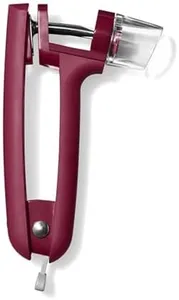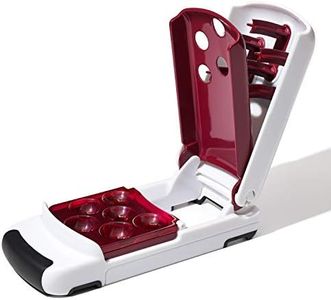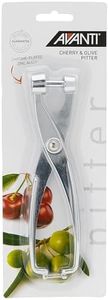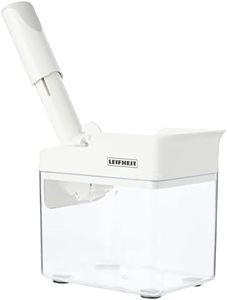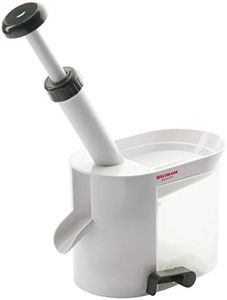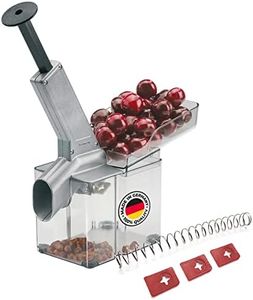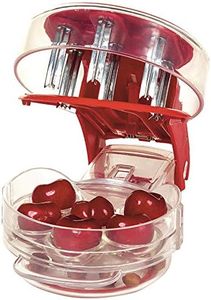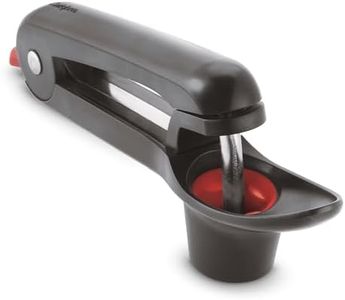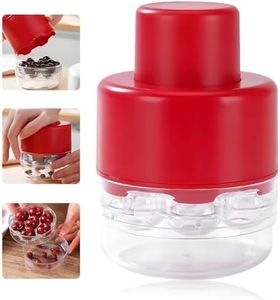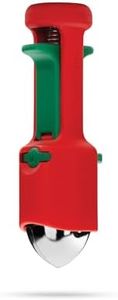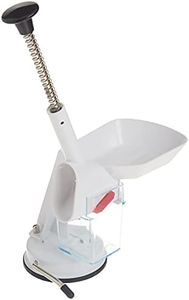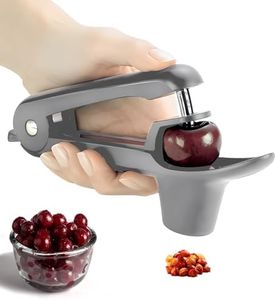We Use CookiesWe use cookies to enhance the security, performance,
functionality and for analytical and promotional activities. By continuing to browse this site you
are agreeing to our privacy policy
10 Best Cherry Pitters
From leading brands and best sellers available on the web.Buying Guide for the Best Cherry Pitters
Choosing a cherry pitter can make your kitchen tasks much easier, especially during cherry season. The right tool helps you quickly remove pits without damaging the fruit or making a big mess. With so many designs and sizes available, it’s helpful to know which features matter most for your needs. Focusing on the right specifications will help you pick a cherry pitter that saves you time, effort, and preserves the quality of your cherries.Pitting MechanismThe pitting mechanism is the method the tool uses to remove the pit from the cherry. It can be a simple plunger, a spring-loaded lever, or a multi-cherry system. The simplicity or complexity affects both speed and ease of use. If you deal with small quantities, a handheld device with a single-plunge mechanism might be enough. For larger batches, a pitter that allows you to process several cherries at once can save you lots of time. Think about how many cherries you usually process at a time to determine which mechanism best suits your workflow.
MaterialCherry pitters are usually made from plastic, stainless steel, or a mix of both. The material affects durability, ease of cleaning, and comfort. Stainless steel pitters tend to be stronger and last longer, ideal if you plan to use them frequently or for many cherries. Plastic pitters are lighter and can be more comfortable to handle but might not last as long. If you want a long-lasting kitchen tool, stainless steel or a sturdy combination of metal and plastic may be the best choice.
Ease of CleaningSince cherries can be messy, having a pitter that’s easy to clean is important for convenience and hygiene. Some models are dishwasher safe, while others need to be cleaned by hand. Look for designs with fewer crevices and removable parts so you can clean it thoroughly after use. If you want the least amount of hassle, check for dishwasher-safe labels or a design that is easy to rinse and dry.
Cherry CapacitySome pitters are designed to handle one cherry at a time, while others can pit several cherries simultaneously. Single-cherry models offer more precision, which is nice for delicate presentation or smaller quantities. Multi-cherry pitters are more efficient if you’re working with a large harvest. Consider how you’ll typically use the pitter—if you bake or can a lot, larger capacity may be valuable; for occasional snacking, single-cherry pitters are usually sufficient.
Juice Splash ProtectionJuicing and splattering can get messy when pitting cherries. Some pitters have features or shields that help reduce splashes and keep your kitchen clean. If you’re concerned about cleanup and stains, look for a tool designed with built-in splash guards or systems to catch juice. This spec is particularly useful if you often pit cherries with kids or want to keep your workspace tidy.
Comfort and ErgonomicsHow comfortable a cherry pitter feels in your hand is crucial, especially if you plan to use it often or for large amounts of cherries. Some pitters have cushioned handles or require less hand strength, making them ideal for longer sessions or for people with weaker grips. Consider how it feels to use and how much effort it might take, so you can avoid fatigue or discomfort.
